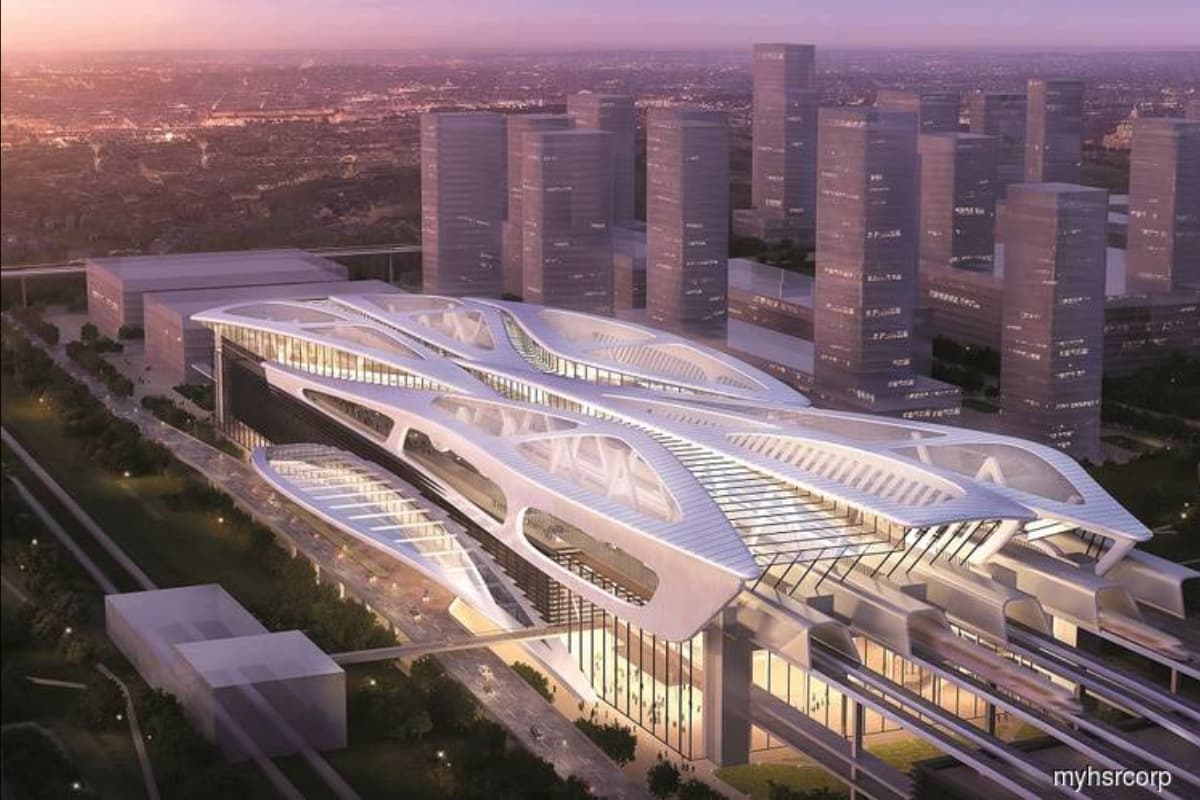
This article first appeared in The Edge Malaysia Weekly on May 8, 2023 - May 14, 2023
MOST of the five Malaysian companies the government has shortlisted to assess the feasibility of building a RM60 billion high-speed rail (HSR) network connecting Kuala Lumpur and Singapore are understood to be in talks with potential partners to undertake the infrastructure project, sources say.
It is understood that of the five — Tan Sri Syed Mokhtar Albukhary-controlled MMC Corp Bhd; WCT Holdings Bhd, controlled by Tan Sri Desmond Lim Siew Choon; YTL Group; Tan Sri Vincent Tan Chee Yioun-controlled Berjaya Group; and Malaysian Resources Corp Bhd (MRCB) — at least two are having high-level discussions for a potential partnership with Chinese state-owned enterprises, and one of the companies seems inclined to partner with a Japanese consortium. The remaining two are said to be waiting for the government to reveal more information on the project.
Berjaya Group is understood to have had high-level discussions with China-based Sinohydro Corp, while YTL is said to be in talks to rope in CRRC Corp Ltd, the world’s largest rolling stock manufacturer, as its potential partner for the HSR project.
Emails to YTL, Berjaya and WCT requesting comment had not been answered at press time.
MRCB and WCT, The Edge understands, are waiting for more clarity on the HSR project from the government. However, MRCB has in the past partnered with China Communications Company Corp, or CCCC, for some local jobs, leading to speculation that the two could collaborate for the HSR job.
MMC, meanwhile, is understood to be looking for a Japanese partner. Another China-based rail player that is in the mix is China Railway Construction Corp Ltd (CRCC), which sources say is keen to partner with local companies.
“There are still a lot of questions which have not been answered … what is the government’s interpretation of HSR? Is it trains that [can reach a speed of] up to 350kph, or more? Remember, the faster the trains are, the straighter the alignment has to be. And if the tracks are elevated, costs can skyrocket 10 times higher. So, there has to be some clarity, some certainty, on the parameters. A company must know what sort of effect the project will have on its balance sheet before it can progress,” says an official familiar with the ongoing talks.
“Also, how much of a commercially driven project is it going to be? If the government is going to step in and regulate the fares, it is going to be a different ball game altogether — no such thing as free rides or low fares during festivities. And if it is going to be private sector-driven, there will likely be fewer stops — Kuala Lumpur, maybe one in Melaka, and then Singapore, if not direct to Singapore with nothing more — there will be no room for stops in Pagoh, Muar, Seremban and all that.”
These developments come after The Edge reported last month that the government had met up with the five construction players, seeking a request for information (RFI) to get their input and give them information in order to obtain proposals from them. The Edge understands that after the RFI phase and an evaluation of the conceptual proposal, a detailed feasibility study will be undertaken by the government.
One of the players who attended the meeting says some of the salient features of the project include a design speed of 350kph, the concessional structure being a design-finance-build-operate-transfer model, and without any government funding or guarantees.
Overall, the scope of the project includes land acquisition, the regulatory compliance and advanced works, designing and building the requisite civil works, designing and building systems and rolling stock, and maintenance and operation of the HSR system.
Plans for an HSR linking Kuala Lumpur to Singapore are not new. The first proposal was in the late 1990s, which was shelved until YTL revived the idea in 2006. The project was again mooted in 2010 under Datuk Seri Najib Razak’s administration. In 2016, the project gained traction when foreign parties, including infrastructure builders from China, Japan and Europe, indicated their interest in participating. The cost was said to be RM110 billion then.
The Chinese authorities saw the rail project — in addition to the East Coast Rail Link, which is currently under construction — as part of China’s Belt and Road Initiative. The ECRL will connect Port Klang on the west coast of Peninsular Malaysia to Kuantan on the east coast and further north to Kota Baru and Tumpat.
In May 2018, a 50:50 MRCB-Gamuda Bhd consortium, known as MRCB Gamuda Consortium, was appointed the project delivery partner (PDP) for the northern package of the HSR, from Kuala Lumpur to the state border between Melaka and Johor. A consortium comprising YTL Corp and pilgrims’ fund Lembaga Tabung Haji was awarded the PDP role for the southern section, which would stretch from the southern side of the Melaka station to the Malaysia-Singapore border.
However, when the Pakatan Harapan coalition took control of Putrajaya in 2018, it suspended the HSR project in view of the government’s tight fiscal condition and ballooning national debt.
The project was terminated in January 2021 by then prime minister Tan Sri Muhyiddin Yassin as Malaysia and Singapore could not reach an agreement on several changes that the Malaysian government had proposed.
As a result, Malaysia had to pay RM320.27 million in compensation “for costs incurred for the development of the HSR project, and in relation to the extension of suspension of project”, a press release by the Economic Planning Unit of the Prime Minister’s Department said at the time.
Save by subscribing to us for your print and/or digital copy.
P/S: The Edge is also available on Apple's App Store and Android's Google Play.
